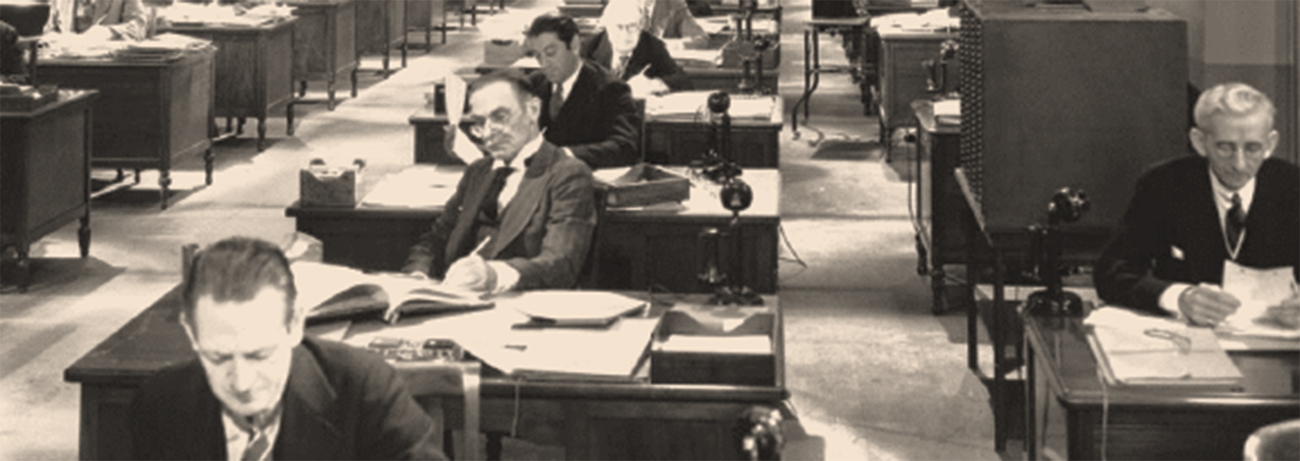
How and where we work has changed dramatically over the decades of the 20th and 21st centuries. And the pace of this change, once measured in decades has sped up to the point where a workplace project could be obsolete before the paint is dry. But as we will see, each of these major eras of workplace design has been shaped by technology ad social changes. Looking at how this interplay happened in the past can help us apply the technology shifts and social changes we are seeing today and glean valuable clues for the workplace of tomorrow.
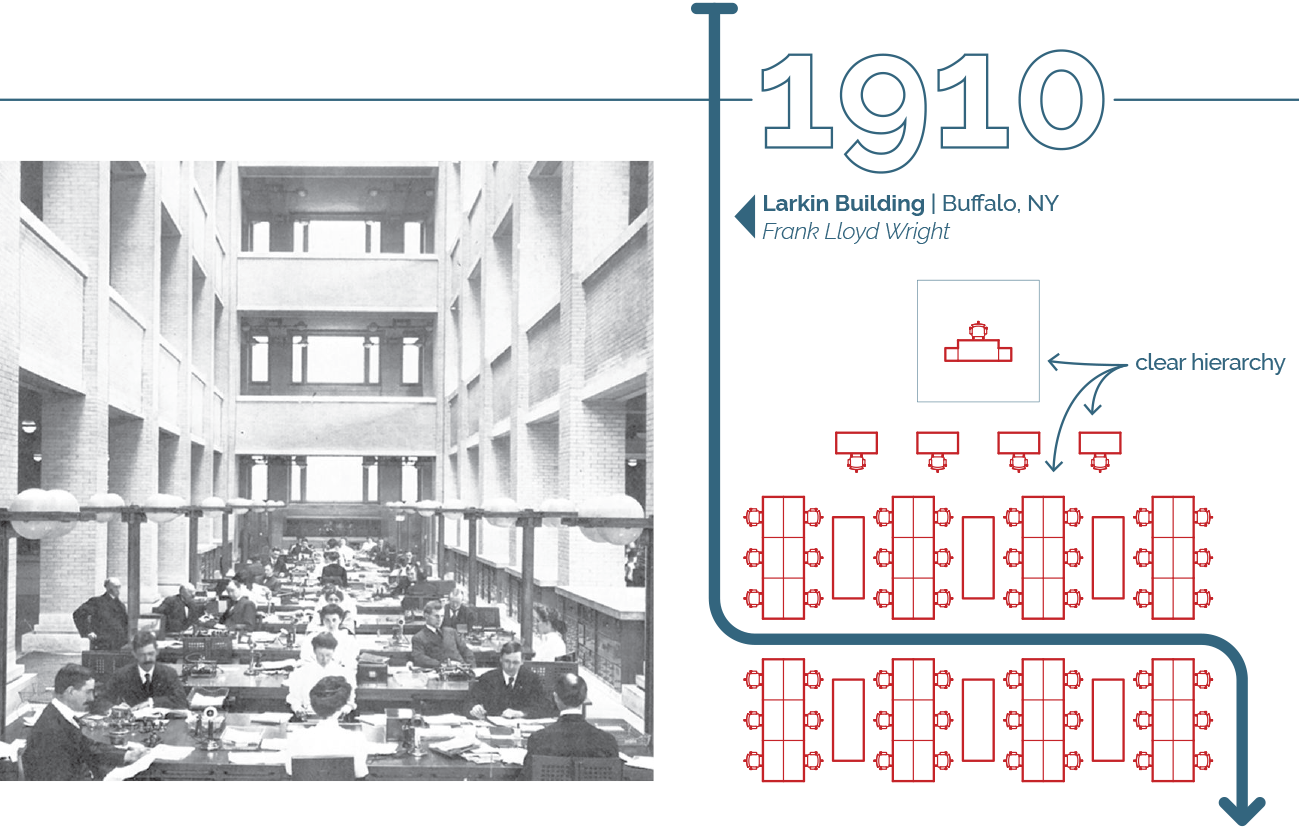
The Taylorism era of the 1910s-1950s, was based on the industrial efficiency ideas of Frederick Winslow Taylor. These
concepts initially were used for factory layouts and focused on standardization and specialization, but were later applied to clerical office work, resulting in hierarchical layouts that limited collaboration and interaction. What was called ‘The American Plan’ office continued this trend with private offices for executives and open areas for clerical staff.
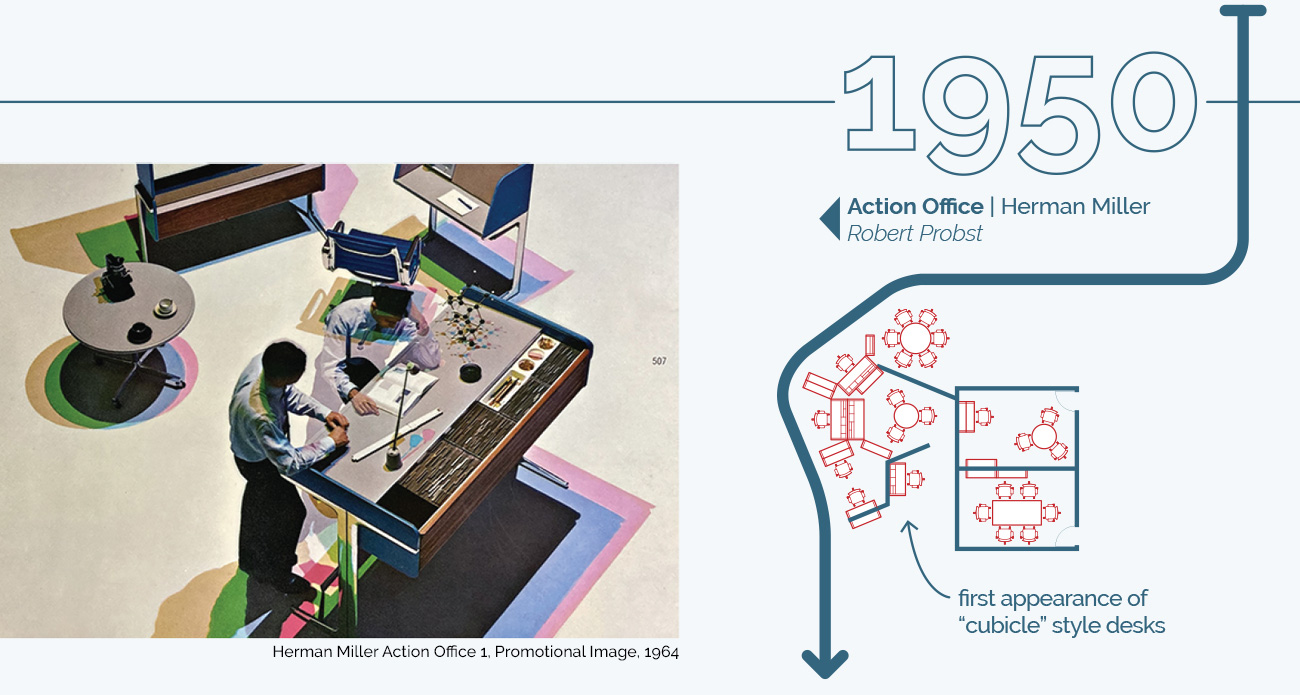
In the 1950s-1970s, the Human Relations movement emphasized employee motivation, leading to the development of
modular workspace systems like Action Office by Robert Probst of Herman Miller. This era prioritized flexibility and
collaboration, and more democratic space planning, but later designs sacrificed modularity and adaptability, resulting in the ubiquitous cubicle during the PC era.
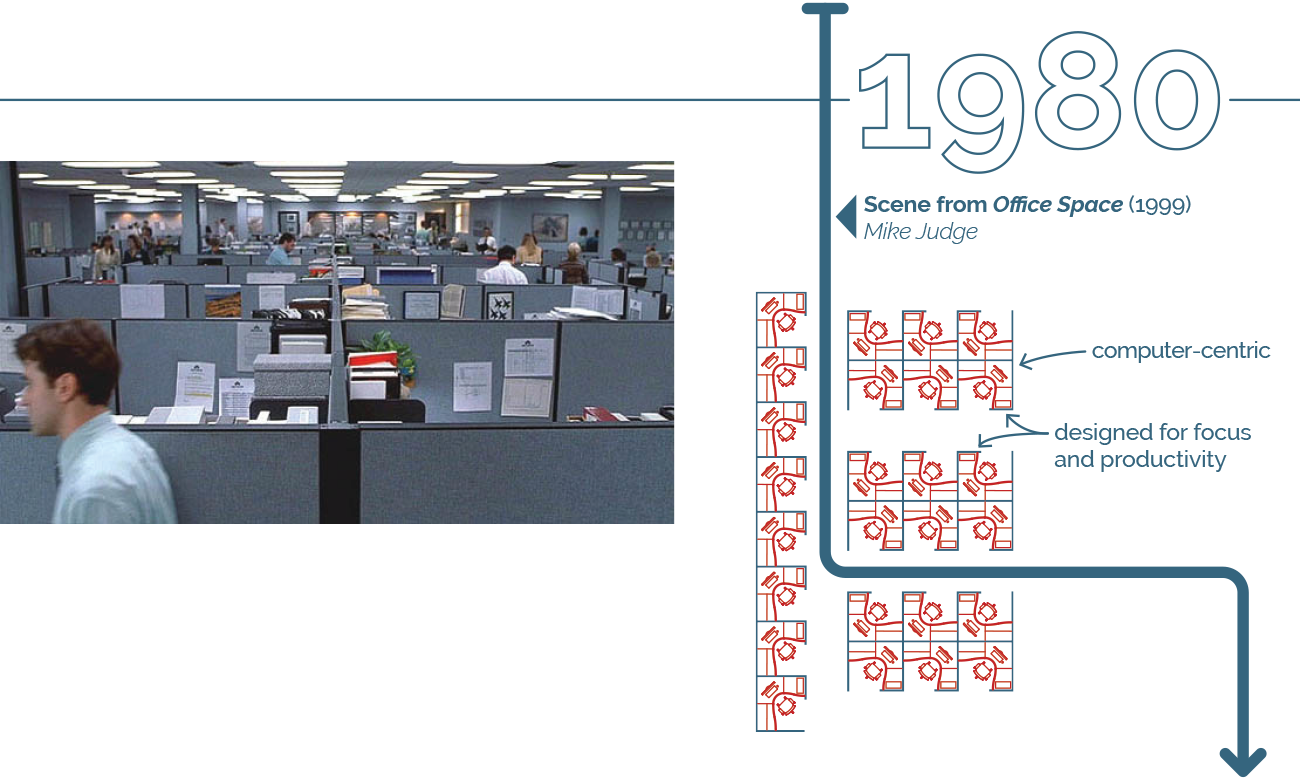
During this time, desktop computing emerged, with a focus on paperless, digital work processes, and ergonomics. Cubicles were widely used but were ultimately viewed as limiting and became objects of pop culture ridicule. (ii)
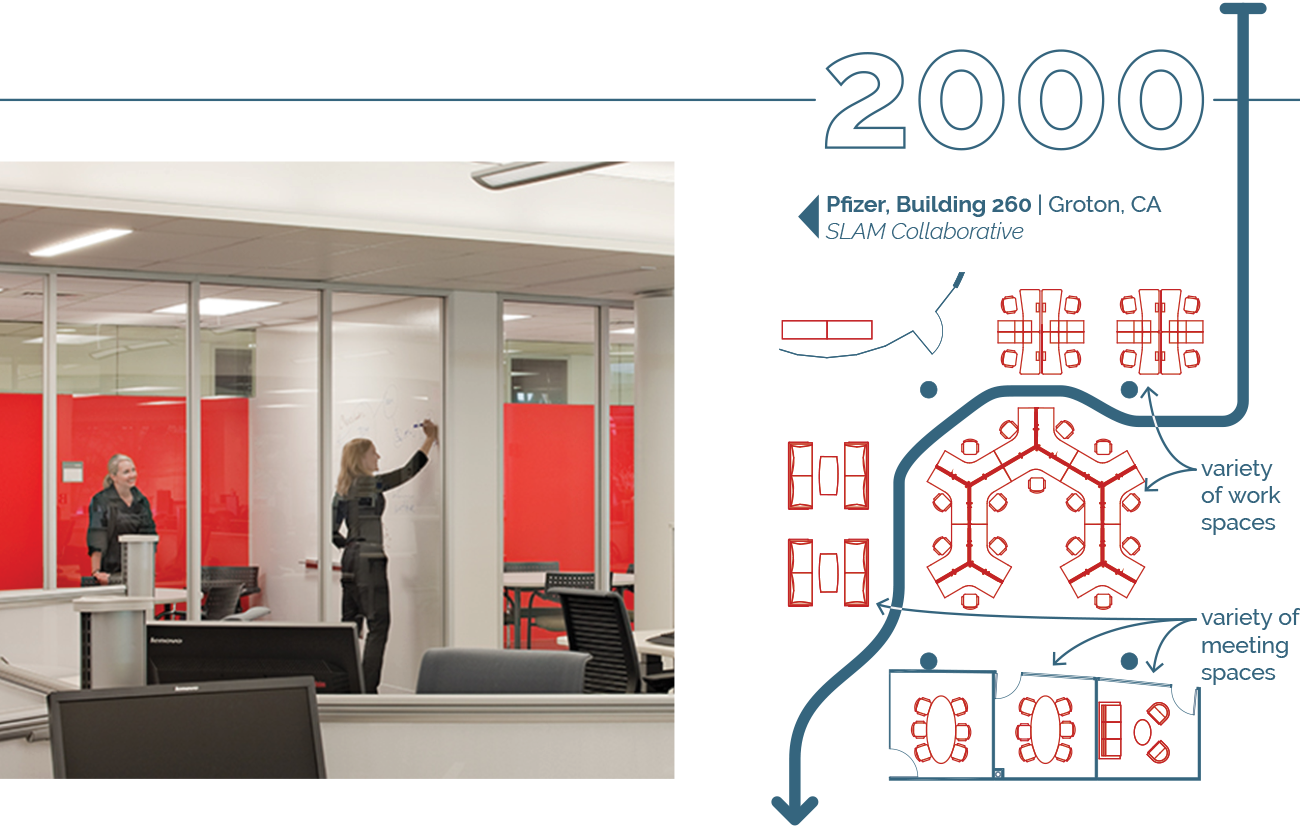
Activity-Based Working prioritized collaboration and flexibility through a choice of different types of workspaces. This era also emphasized sustainability and saw the rise of coworking spaces.
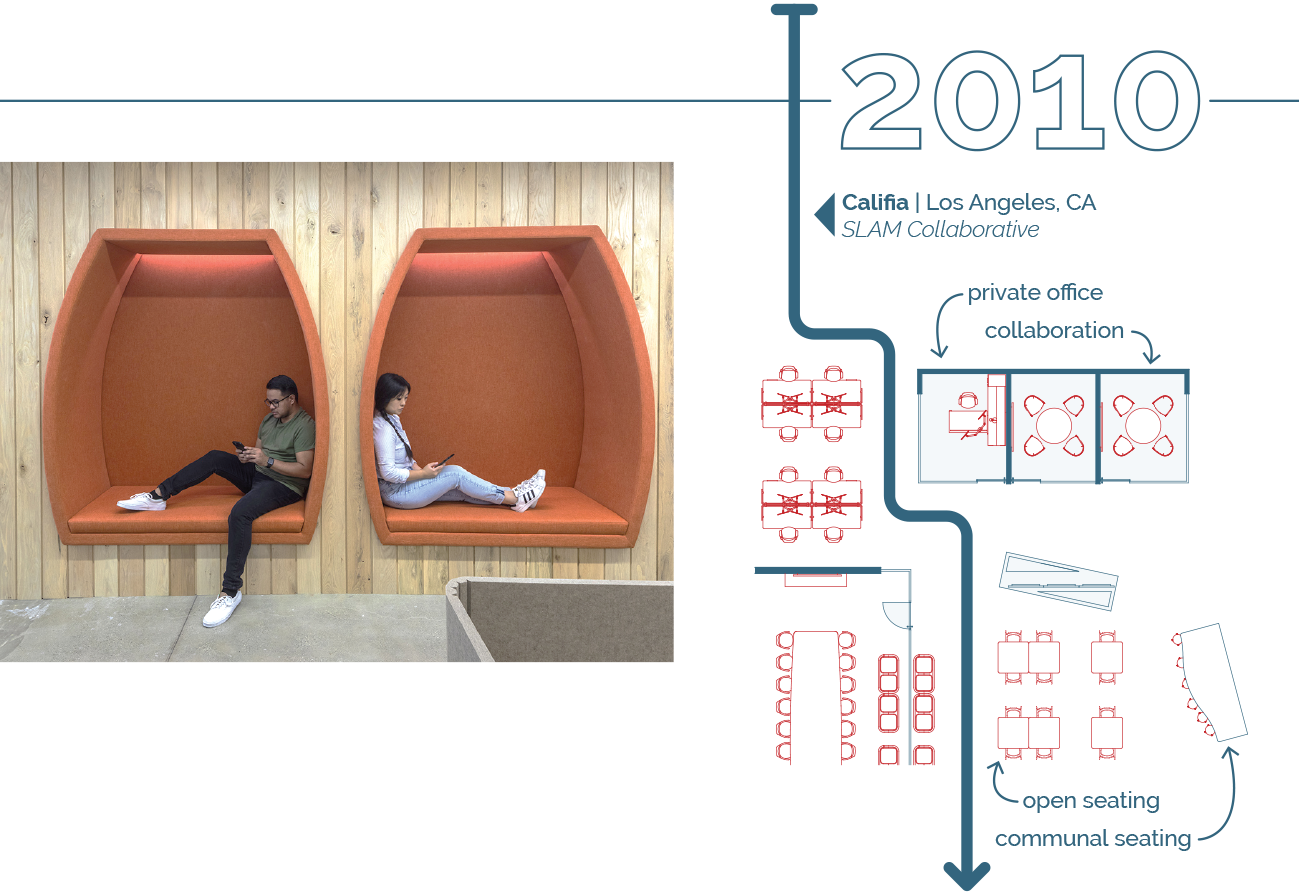
The introduction of mobile devices and increasing use of laptops further enhanced the prioritization of collaboration and choice. We gained the freedom to move around and collaborate more easily. During this time, sustainability continued to be a priority alongside employee well-being. While some workers pioneered digital nomadism, it was yet to become the norm in most workplaces. (i)
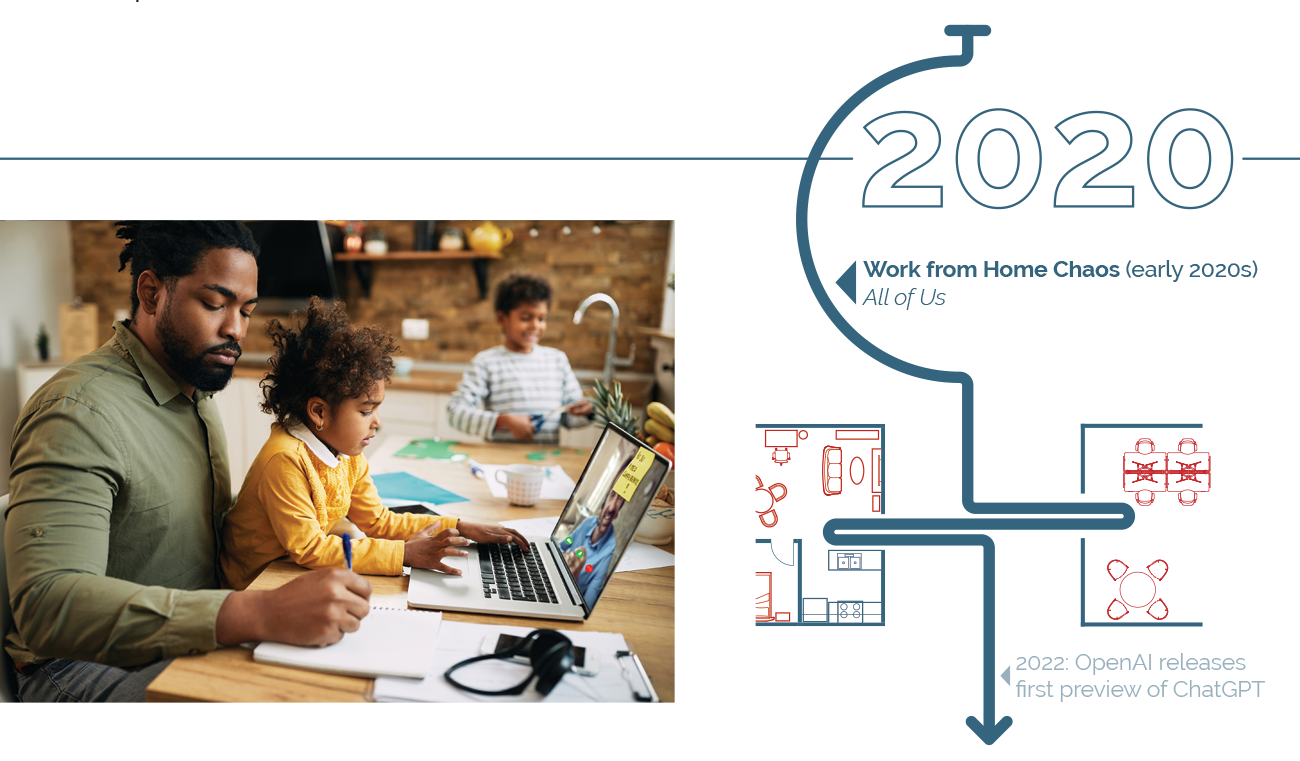
The COVID-19 pandemic disrupted traditional workplace structures, forcing organizations to quickly adopt remote and hybrid work arrangements. This led to an increase in technology capabilities, trust, and management practices that facilitated remote work. As a result, employers and employees had to redefine their approach to work and balance their work and home life. This era brought a renewed emphasis on employee engagement, well-being, and flexibility. (v)
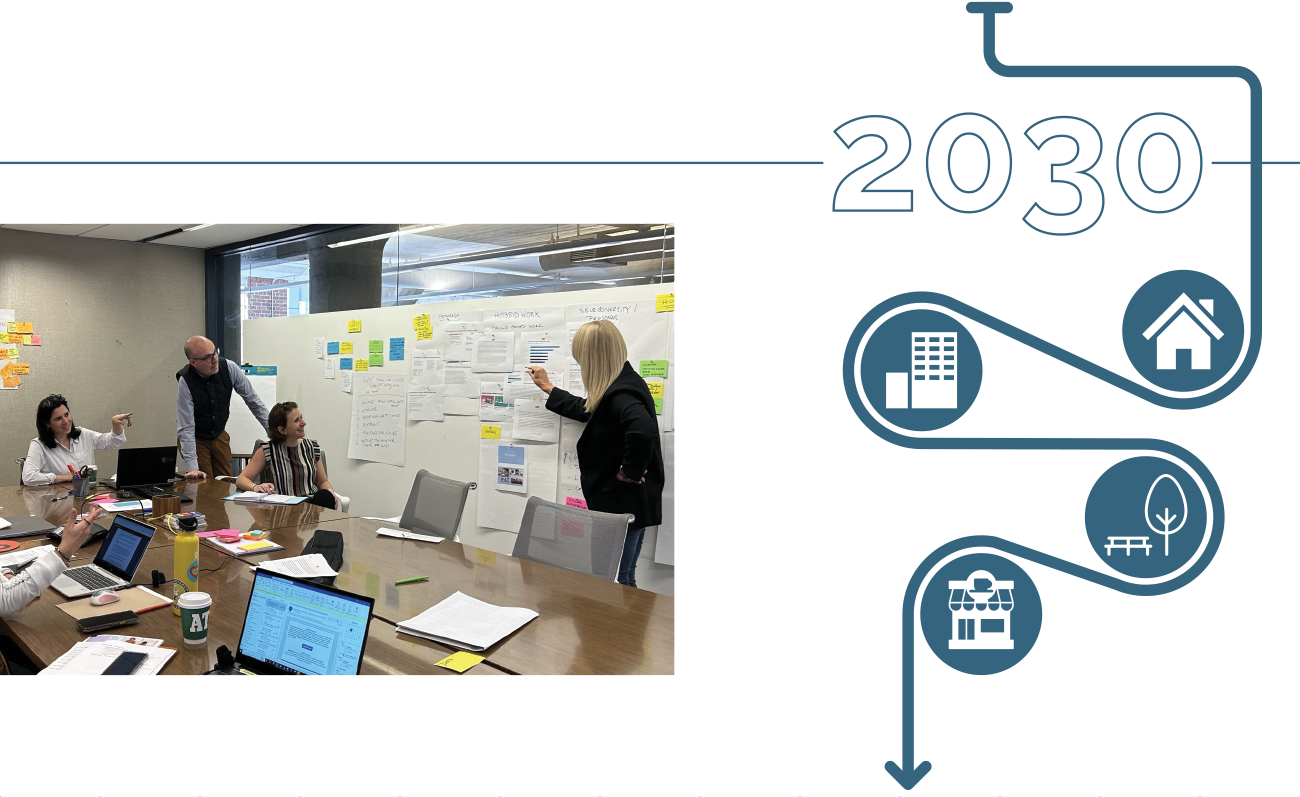
As we envision the next workplace, we enter an era of rapid experimentation, driven by the incompleteness of hybrid solutions and the “always on” culture. The workplace will no longer be a one-size-fits-all; organizations will seek bespoke solutions that align with their culture, vision, and goals.
Dedicated workplaces will evolve to support diverse work styles, balancing privacy and openness, and emphasizing comfort and flexibility to rival the benefits of working from home. Additionally, distributed workspaces like satellite offices, cafes, and co-working spaces will become more common, requiring careful consideration to maintain quality and company culture.
The power of place to build culture will remain important, as organizations strive to harness the full potential of their people. Continuous learning and development, potentially incorporating technologies like augmented and virtual reality, will be crucial as the pace of change accelerates.
The future of work is exciting, but it will always be about people coming together with a sense of purpose to achieve more collectively than individually.

(i) Nikil Saval, Cubed: A Secret History of the Workplace, 2014, Doubleday
(ii) Hamza Shaban, “The Past and Future of the Office: A Visual Timeline of Workplaces”, Washington Post, April 13, 2023
(iii) Kelsey Gripenshaw and Anne Noyes Saini, “A brief History of the Modern Office”, Harvard Business Review, July 15, 2020
(iv) Belinda Lanks “Cozy in Your Cubicle? An Office Design Alternative May Improve Efficiency” Bloomberg, September 18, 2014
(v) Nancy P. Rothbard, “Building Work Life Boundaries in the WFH Era”, Harvard Business Review, July 15, 2020
